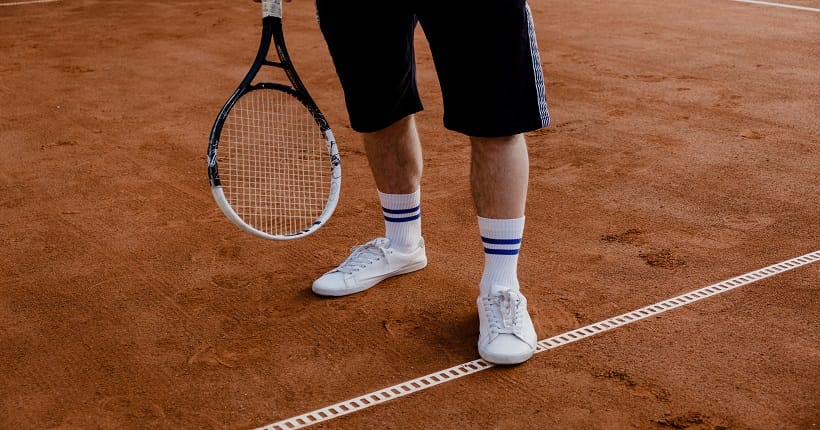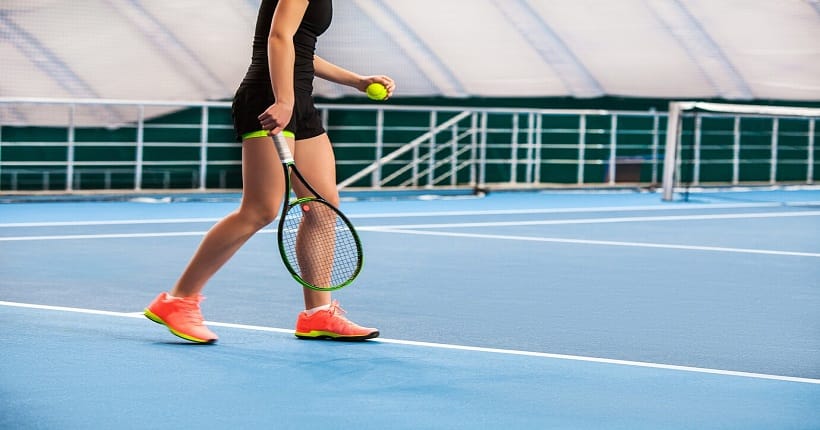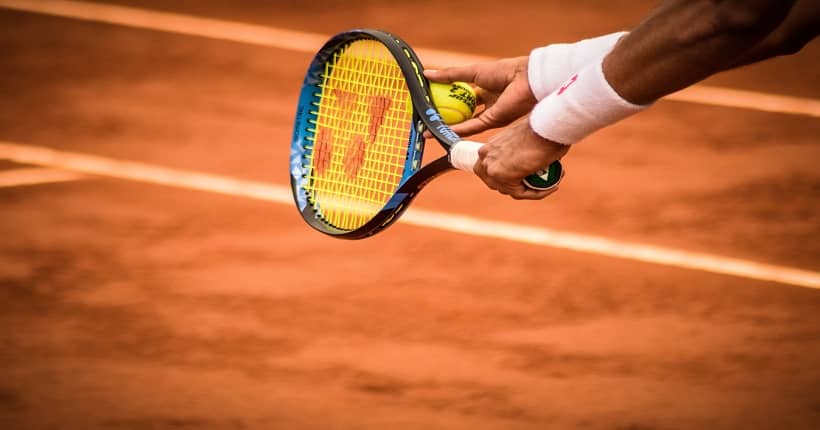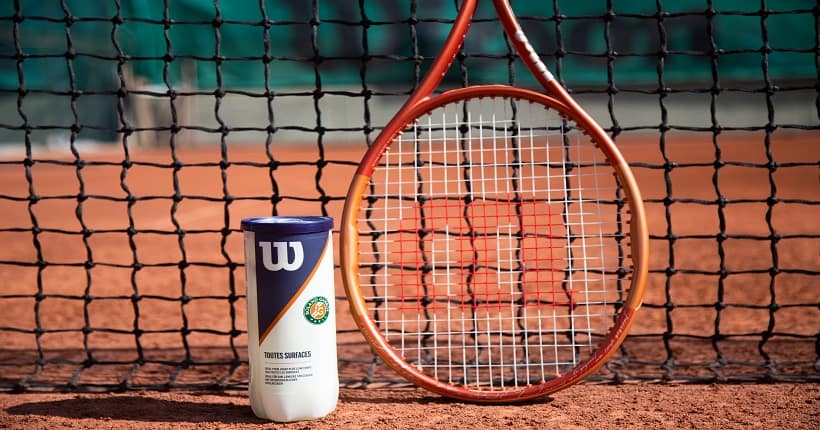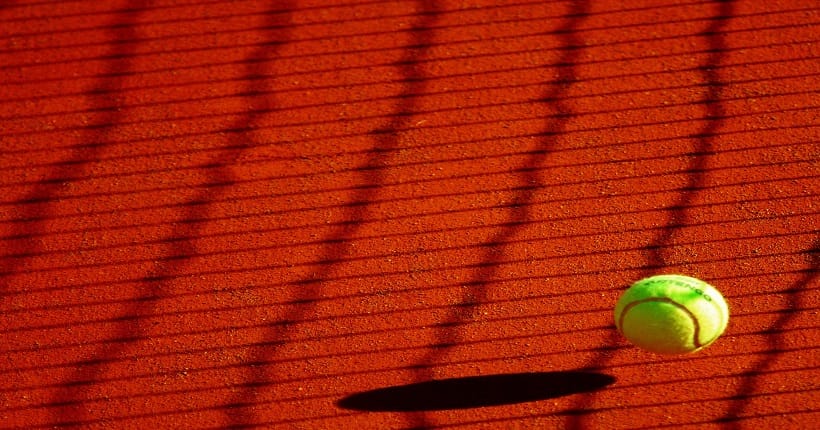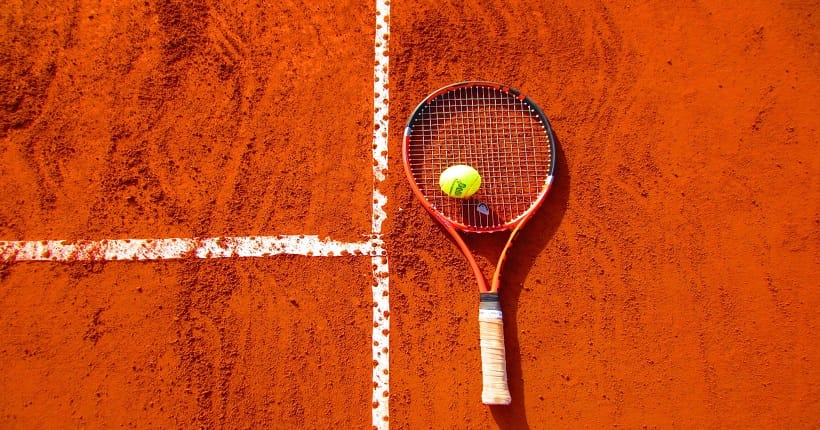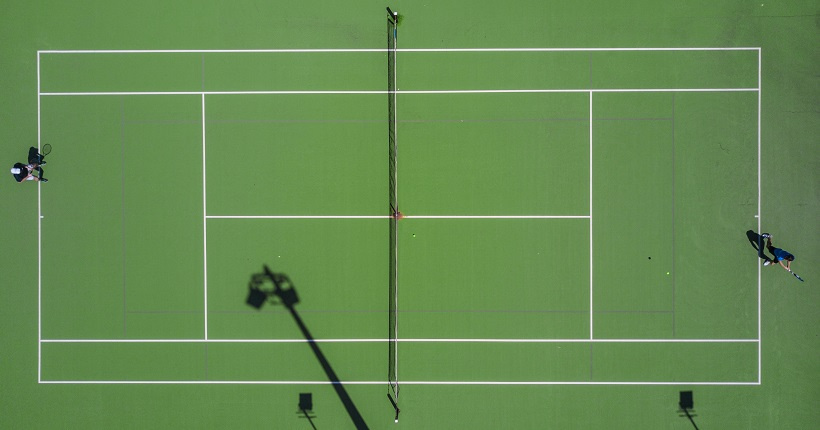What Is A Foot Fault In Tennis?
In tennis, a foot fault occurs when the server’s foot touches or crosses over the baseline before making contact with the ball. A foot fault is a violation of the serve rules and results in the loss of a point.
In tennis, players must observe certain rules while serving the ball. One of these rules relates to the position of the server’s feet. A foot fault is incurred when the server’s foot touches or crosses over the baseline before striking the ball.
This violation results in the forfeiture of a point. The purpose of this rule is to ensure that players remain behind the baseline during the serve, maintaining fairness and preventing any advantage gained from stepping forward. Understanding foot faults in tennis is crucial for players and officials to maintain fair play and uphold the integrity of the game.
The Basics Of Foot Faults
In the game of tennis, foot faults are an essential element to grasp. These can be a tricky situation for players, as they can result in penalty points and even the loss of a serve. Hence, it becomes crucial to understand the basics of foot faults in tennis to avoid any unnecessary errors during a match. In this article, we will delve into the definition of a foot fault, the role of the server’s feet in foot faults, and how umpires determine and enforce foot faults.
Definition of a Foot Fault in Tennis
In simple terms, a foot fault in tennis occurs when the server fails to follow specific rules related to their foot placement during the serve. The server is required to stand behind the baseline and within the imaginary extensions of the singles sideline. The server’s feet must be firmly established on the ground before striking the ball. Furthermore, the feet should not touch or cross over any part of the baseline or the court while the serve is being executed. Failure to adhere to these regulations results in a foot fault.
The Role of the Server’s Feet in Foot Faults
The server’s feet play a significant role in the occurrence of a foot fault. They must be positioned correctly to ensure a fair and legal serve. To execute a proper serve, the server’s feet are required to be behind the baseline. The server’s front foot should be placed just behind the baseline, parallel to it, while the back foot may be positioned alongside or behind the front foot, also behind the baseline.
The proper alignment of the server’s feet not only ensures a legal serve but also allows the server to generate maximum power and accuracy. By maintaining a correct foot position, the server can effectively transfer their body weight into the shot, contributing to a powerful serve, while also maintaining balance and stability during the motion.
How Foot Faults are Determined by Umpires
Umpires play a crucial role in determining whether a foot fault has occurred during a tennis match. They keep a keen eye on the server’s feet throughout the service motion. Umpires are generally positioned behind the server’s end of the court, giving them a clear view of the server’s foot position.
When monitoring potential foot faults, umpires specifically focus on two main factors: the server’s foot placement before the serve and whether the feet make contact with the baseline or any part of the court during the service motion. If the umpire observes a violation of these rules, a foot fault is called, resulting in a penalty point against the server.
It is worth noting that umpires are diligent in monitoring foot faults, but as with any human judgment, there can be instances of missed calls or disagreements between players and officials. To mitigate this, some professional tennis matches employ technology, such as electronic line-calling systems, which can help detect and provide accurate information regarding foot faults.
Understanding the basics of foot faults in tennis is crucial for players and spectators alike. By comprehending the definition of a foot fault, the importance of the server’s foot position, and how umpires determine these infractions, players can strive to avoid costly errors and ensure a fair and competitive match.
Common Causes Of Foot Faults
Incorrect positioning of the server’s feet
One of the most common causes of foot faults in tennis is the incorrect positioning of the server’s feet. To start the serve, the server must have both feet behind the baseline and within the boundaries of the service box. However, many players unknowingly position their feet in such a way that one or both feet end up touching or crossing the baseline or the outer edge of the service box.
This incorrect positioning can happen due to various reasons. Sometimes, the server may misjudge the distance or angle of their feet, resulting in them stepping on or beyond the line. In other cases, it may be a result of poor footwork or lack of awareness about the rules of foot fault.
Lack of awareness of the service box boundaries
Another common cause of foot faults in tennis is the lack of awareness of the service box boundaries. The service box is a rectangular area on both sides of the net, and the server must serve the ball inside this box. However, some players may not have a clear understanding or knowledge of the exact boundaries of the service box.
Due to this lack of awareness, the server may unintentionally place their feet outside the confines of the service box while serving, leading to a foot fault. It is crucial for players to familiarize themselves with the dimensions and boundaries of the service box to avoid such faults.
Foot faults due to slight movements during the serve
In addition to incorrect positioning and lack of awareness, foot faults can also occur due to slight movements during the serve. Tennis players often navigate through complex motions and weight transfers while serving, and even a minor shift in the position of their feet can result in a foot fault.
These slight movements can happen due to various reasons, such as the server losing balance or trying to generate more power in their serve by making extra adjustments with their feet. Additionally, nerves or lack of focus can cause involuntary foot movements, resulting in a foot fault.
It is essential for players to maintain a stable and balanced posture during the serve to minimize the risk of foot faults. By practicing proper foot positioning and staying aware of their movements, players can significantly reduce the occurrence of foot faults and ensure fair play in tennis matches.
Consequences And Impact Of Foot Faults
Foot faults are a common occurrence in tennis that can have significant consequences for players. These faults occur when a player commits a violation by stepping over the baseline or onto the court while serving. In this article, we will explore the various ways foot faults can impact the outcome of a serve, the penalties and consequences associated with them, and how they can affect a player’s overall performance and mental state.
Affecting the Outcome of the Serve
Foot faults can have a direct impact on the outcome of a serve in tennis. When a foot fault is committed, the serve is considered invalid, and the player loses the point. This can be extremely frustrating for the server as it takes away an opportunity to earn a point or put pressure on their opponent. In addition, a foot fault can disrupt the player’s rhythm and concentration, making it more difficult to execute a successful serve.
Penalties and Consequences for Foot Faults
Penalties and consequences for foot faults vary depending on the level of play and the severity of the violation. In professional tennis, players are given a warning for their first offense. However, subsequent foot faults can result in a penalty point being awarded to the opponent, or even a game penalty if the violations persist. These penalties can have a significant impact on the outcome of a match and can be a source of frustration and mental pressure for the player committing the foot fault.
In addition to penalties, foot faults can also result in reputation damage for players. Repeated foot faults can be seen as a lack of discipline or focus, which can create a negative perception among fans, opponents, and even referees. This can impact a player’s future matches and overall standing in the tennis community.
Impact on the Player’s Overall Performance and Mental State
Foot faults can have a detrimental effect on a player’s overall performance and mental state. Firstly, the act of committing a foot fault can disrupt a player’s concentration and focus, leading to errors and inconsistencies in their gameplay. This can greatly affect their ability to execute accurate serves and make effective shots.
Furthermore, the awareness of having committed foot faults in the past can create anxiety and self-doubt, leading to a decline in confidence on the court. Players may become hesitant in their movements, overthink their technique, and experience a loss of rhythm. This mental pressure can also negatively impact decision-making during matches, affecting the player’s strategy and overall performance.
Overall, foot faults in tennis can have wide-ranging consequences and a significant impact on players’ performance, mental state, and overall standing in the game. It is crucial for players to be aware of these consequences and make necessary adjustments to their technique and focus to avoid foot faults and maintain a competitive edge.
Correct Foot Positioning And Alignment
When it comes to playing tennis, foot positioning and alignment are critical for a successful serve. Correct positioning ensures that the server’s foot does not touch or cross the baseline, preventing any foot fault mistakes. This article will provide insights into the importance of proper foot placement in the service box, as well as tips for maintaining a balanced stance and alignment. Additionally, it will discuss practicing foot placement to avoid foot fault mistakes.
Importance of proper foot placement in the service box
Proper foot placement in the service box is crucial in tennis as it helps maintain a fair and accurate game. A foot fault occurs when the server’s foot touches or crosses the baseline while serving. This not only results in the loss of a point but can also disrupt the momentum and rhythm of the server, affecting the overall game. By adhering to proper foot placement, players ensure a level playing field and avoid any unnecessary penalties.
Tips for maintaining a balanced stance and alignment
To maintain a balanced stance and alignment during a serve, players should focus on a few key elements:
- Position your non-dominant foot (left foot for right-handed players and vice versa) slightly behind the baseline, ensuring it does not touch or cross the line.
- Distribute your weight evenly on both feet, maintaining a stable and balanced position.
- Keep your feet approximately shoulder-width apart to provide a solid base for power and stability.
- Ensure that your toes are pointing towards your target, aligning your body and racket in the desired direction.
- Maintain a slight bend in your knees, allowing for better control and fluidity of movement.
By following these tips, players can achieve proper foot positioning, allowing for a more powerful and accurate serve.
Practicing foot placement to avoid foot fault mistakes
Practicing foot placement is crucial to avoid foot fault mistakes and build confidence in executing a serve effectively. Here are some helpful strategies:
- Create markers on the court to simulate the position of the service box, ensuring that the non-dominant foot remains behind the baseline.
- Utilize video analysis to identify any potential foot fault tendencies and make necessary adjustments.
- Perform drills that specifically focus on foot placement, such as repeatedly practicing a serve motion without hitting the ball, solely focusing on correct foot positioning.
- Work with a tennis coach or partner who can provide feedback and guidance on maintaining proper foot alignment during serves.
By consistently practicing and reinforcing the correct foot placement, players can enhance their game and minimize the risk of foot fault mistakes.
Increasing Awareness Of Service Box Boundaries
The service box in tennis is an essential area of the court that players must be aware of when serving. It is crucial to understand the dimensions of the service box to avoid foot faults. A foot fault occurs when a player’s foot touches or crosses over the service line while serving. To prevent this from happening, players need to increase their awareness of the service box boundaries. In this article, we will explore the dimensions of the service box, techniques to avoid stepping beyond the service line, and drills and exercises to improve spatial awareness.
The dimensions of the service box
Before diving into techniques and drills, it’s important to grasp the dimensions of the service box. The service box is a rectangular area located on either side of the court, adjacent to the net. It measures 21 feet long and 13.5 feet wide for singles matches. In doubles matches, the service box is expanded to a width of 27 feet.
Inside the service box, there are several lines that players must be aware of, including the baseline, the center service line, and the service line. The baseline marks the outer boundary of the service box, while the center service line divides it into two equal halves. The service line is located parallel to the baseline, 21 feet away from it.
Techniques to avoid stepping beyond the service line
Stepping beyond the service line can result in a foot fault, which can lead to penalties or points for the opponent. To prevent foot faults, players can utilize various techniques:
- Proper foot positioning: Before serving, ensure that your lead foot is positioned behind the baseline or on the imaginary extension of it. This will help you establish a solid foundation and reduce the chances of stepping over the service line.
- Balance and body control: Maintaining balance and control during the serve is essential. Focus on keeping your weight evenly distributed and your body aligned with the service line. Avoid leaning too far forward or backward, as it can increase the risk of foot faults.
- Rhythmic motion: Develop a smooth and consistent serving motion that allows for proper weight transfer and foot placement. Practicing a fluid motion will help you maintain control over your footwork and minimize the possibility of stepping beyond the service line.
- Awareness during the follow-through: Many foot faults occur during the follow-through phase of the serve. Pay close attention to your foot position as you complete the serve, ensuring that no part of your foot crosses over the service line.
Drills and exercises to improve spatial awareness
To enhance your spatial awareness and minimize foot faults, incorporate the following drills and exercises into your training routine:
| Drill/Exercise | Description |
|---|---|
| Line Stepping Drill | Set up a series of lines on the court, focusing on the service line and the baseline. Practice serving while maintaining proper foot positioning and avoiding stepping beyond these lines. |
| Service Box Targets | Create visual targets using cones or markers inside the service box. Aim to serve without hitting or stepping on these targets, promoting a heightened sense of spatial awareness. |
| Footwork Agility Drills | Combine footwork drills, such as ladder drills or cone drills, with serving practice. This will develop quick and precise foot movements, reducing the likelihood of foot faults. |
Incorporating these drills and techniques into your training regimen will help increase your awareness of service box boundaries and minimize foot faults. By mastering the dimensions of the service box, refining your footwork, and practicing spatial awareness, you will enhance your serving game and avoid unnecessary penalties.
Developing A Stable And Controlled Serve
One of the crucial aspects of a successful tennis serve is having a stable and controlled motion. Without a solid foundation, it can be difficult to generate power and accuracy in your serves. A foot fault is a common mistake made by many players, which can negatively impact their serves. Understanding and addressing foot faults is essential for developing a stable and controlled serve.
Importance of a consistent and controlled serve motion
A consistent and controlled serve motion is vital for several reasons. Firstly, it ensures that you have a reliable technique that can be replicated during match situations. By developing muscle memory through consistent practice, you can rely on your serve to deliver consistent results. Moreover, a controlled serve motion also allows for better positioning and balance on the court, giving you more control over ball placement and accuracy. Lastly, a stable and controlled serve can help prevent injuries by reducing unnecessary strain on your body.
Techniques to minimize unnecessary foot movement
Minimizing unnecessary foot movement is crucial to avoid foot faults and maintain stability throughout your serve. Here are some techniques to help you achieve this:
- Establish a stable stance: Start with a balanced and comfortable stance, with your feet shoulder-width apart. Ensure that your body weight is evenly distributed between your front and back foot.
- Limit step length: When initiating your serve, keep your steps short and controlled. Avoid taking excessively large steps, as it can lead to imbalance and foot faults. Maintain focus on pivoting your back foot and driving forward into the shot.
- Avoid unnecessary lateral movement: Try to minimize lateral movement during your serve by keeping your back foot parallel to the baseline. This will help maintain stability and prevent any foot faults resulting from sliding or shifting.
- Stay centered: Throughout your serve, focus on keeping your body centered and balanced. Avoid leaning too far forward or backward, as it can disrupt your serve motion and lead to foot faults.
Strategies for maintaining stability throughout the serve
In addition to minimizing unnecessary foot movement, there are other strategies you can employ to maintain stability throughout your serve:
- Engage your core: A strong and stable core is essential for maintaining balance and stability during your serve. Focus on engaging your abdominal and lower back muscles to provide a solid foundation.
- Practice balance exercises: Incorporate exercises that improve your balance, such as one-legged stands and stability ball exercises. These exercises will help strengthen the muscles responsible for maintaining stability during your serve.
- Visualize proper form: Take time to visualize and mentally rehearse a stable and controlled serve. By visualizing proper form, you can better translate it into physical actions.
- Seek guidance: If you consistently struggle with foot faults or maintaining stability during your serve, consider seeking guidance from a qualified tennis coach. They can provide specific feedback and advice tailored to your technique.
By developing a stable and controlled serve, you can enhance the consistency and effectiveness of your game. Minimizing foot faults and maintaining stability allows you to focus on generating power, accuracy, and overall performance on the court.
Reacting To A Foot Fault Call
A foot fault call in tennis can be both frustrating and distracting for players. It can disrupt their rhythm, affect their concentration, and even lead to disagreements with the umpire. However, it is important for players to stay composed and handle these challenges in a constructive manner. In this article, we will explore some strategies for reacting to a foot fault call and regaining focus on the game.
Staying Composed and Avoiding Distractions
When faced with a foot fault call, it is natural to feel a surge of emotions and frustrations. However, it is crucial to stay composed and avoid distractions that can hinder your performance. Here are some tips:
- Take a deep breath: In the heat of the moment, take a moment to inhale deeply and exhale slowly. This simple breathing technique can help calm your nerves and refocus your mind.
- Maintain a positive mindset: Instead of dwelling on the call or getting lost in negative thoughts, try to shift your focus to the present moment. Remind yourself of your skills, strengths, and the goals you want to achieve during the match.
- Block out external distractions: Crowd noise, umpire discussions, or even your opponent’s reaction can all be distracting. Train yourself to tune out these distractions and concentrate solely on your game. One helpful practice is to visualize yourself in a bubble, where only your actions and thoughts matter.
Handling Challenges and Disagreements with the Umpire
While it is natural to disagree with a foot fault call, it is important to handle this challenge in a respectful and professional manner. Here are some strategies for managing disagreements with the umpire:
- Stay calm and composed: Be mindful of your tone and body language when discussing the call with the umpire. Keeping a level head will not only help you express your concerns effectively but also maintain a positive rapport with the umpire.
- Ask for clarification: If you genuinely do not understand the ruling, politely ask the umpire for clarification. This shows that you are seeking to understand and not simply challenging their decision.
- Accept the call and move on: Sometimes, it is best to accept the call as it stands and focus on the next point. Dwelling on a disputed call can only serve as a distraction and hinder your performance. Let go of the frustration and refocus your energy on the game.
Strategies for Refocusing and Regaining Confidence
After a foot fault call, it is normal to feel shaken and lose confidence. However, with the right strategies, you can refocus and regain your confidence. Here are some techniques to help you bounce back:
| Technique | Description |
|---|---|
| Positive self-talk | Replace negative thoughts with positive affirmations. Remind yourself of your abilities and past successes. |
| Visualization | Close your eyes and visualize yourself executing successful serves or shots. This mental rehearsal can rebuild your confidence. |
| Focus on the process | Instead of fixating on the outcome of the match, shift your attention to executing each shot to the best of your ability. This helps you regain control and confidence. |
| Routine reestablishment | Reestablish your pre-shot routine to regain a sense of familiarity and control. This can help you get back into the rhythm of the game. |
By incorporating these strategies, you can react to a foot fault call in tennis effectively. Remember that staying composed, handling challenges with the umpire, and refocusing on the game are key to maintaining a high level of performance.
Addressing Common Foot Fault Concerns
If you’re a tennis player or a fan of the sport, you’ve probably heard the term “foot fault” being thrown around. A foot fault occurs when a player’s foot touches or crosses over the baseline while serving. It may seem like a trivial matter, but foot faults can have significant consequences in a match.
Mythbusting common misconceptions about foot faults
There are several myths and misconceptions surrounding foot faults in tennis. Let’s debunk some of the most common ones:
Myth: A foot fault only occurs if the server’s foot completely crosses the baseline.
Fact: Contrary to popular belief, any part of the server’s foot touching or overstepping the baseline is considered a foot fault. This includes the heel, toe, or any other part of the foot. Even a slight infringement can result in a fault being called.
Myth: Foot faults are only relevant in professional matches.
Fact: Foot faults are applicable to players at all levels of the game, from recreational to elite. While the rules and regulations may be more tightly enforced in professional matches, foot fault calls can occur in any setting.
Myth: Foot faults are solely the responsibility of the server.
Fact: While it is primarily the server’s responsibility to ensure they do not foot fault, the receiver can also be called for a foot fault if their movement interferes with the server’s ability to execute a serve. Both players should be mindful of their foot positioning throughout the match.
The limitations and subjectivity of foot fault calls
Despite efforts to standardize foot fault calls, there are inherent limitations and subjectivity involved. Here are a few factors to consider:
- Baseline visibility: In some instances, the server’s feet may be partially obstructed from the line judge’s view or the player’s own sightline. This can lead to inconsistencies in foot fault calls.
- Evaluating intent: Determining whether a foot fault was intentional or accidental can be challenging. It is crucial for players to maintain good sportsmanship and not exploit foot fault situations to gain an advantage.
- Referee discretion: Ultimately, the decision to call a foot fault lies with the referee or line judge. Their judgment may be influenced by various factors such as viewing angle, match context, and individual interpretation of the rules.
Strategies for minimizing foot fault incidents through practice and technique refinement
Now that we’ve cleared up some misconceptions and understand the subjectivity involved, let’s explore strategies to minimize foot fault incidents:
- Work on foot placement: Practice serving motions with focus on consistent foot placement. Develop muscle memory, ensuring each step lands within the boundaries of the baseline.
- Utilize visual cues: Use visual markers or imaginary lines on the tennis court to help gauge foot positioning while serving. This can improve accuracy and reduce the chances of foot faults.
- Receive feedback: Have a coach or fellow player observe your serves and provide feedback on your foot placement. They can point out any potential foot faults that may go unnoticed during self-assessment.
- Go slow and steady: Sometimes, players foot fault due to rushing or lack of focus. Take your time during the serve, paying attention to foot placement and maintaining a controlled pace.
By implementing these strategies and refining your serving technique, you can decrease the likelihood of foot faults occurring and ensure fair play during your tennis matches.

Credit: www.dansadvantage.com
Frequently Asked Questions Of What Is A Foot Fault In Tennis?
How Do You Get Foot Fault In Tennis?
In tennis, you can get a foot fault when your foot touches or crosses the baseline before hitting the ball during a serve.
Do They Still Call Foot Faults In Tennis?
Yes, foot faults are still called in tennis.
Did Serena Actually Foot Fault?
Yes, Serena Williams did foot fault during a tennis match.
How Do You Avoid Foot Fault In Tennis?
To avoid foot fault in tennis, follow these guidelines: 1. Maintain good balance and position your feet properly during the serve. 2. Ensure that your front foot stays behind the baseline until the ball is hit. 3. Make sure your back foot doesn’t touch or cross over the baseline during the serve.
4. Practice proper footwork and body positioning to avoid any foot faults. 5. Stay focused and disciplined while serving to minimize the chance of committing a foot fault.
Faq 1: What Happens If You Foot Fault In Tennis?
When you foot fault in tennis, it results in a fault being called against you, and you lose the point.
Faq 2: How Do You Prevent Foot Faults In Tennis?
To prevent foot faults in tennis, ensure that you keep both feet behind the baseline until after you hit the ball.
Conclusion
Understanding what a foot fault in tennis is crucial for players to avoid penalties and maintain fair gameplay. From the visible example of stepping over the baseline before serving to the less apparent instances of touching or crossing the imaginary line, foot faults can occur, affecting the outcome of matches.
By practicing proper footwork techniques and attaining a thorough knowledge of the rules, players can effectively avoid foot faults and enhance their performance on the court. Stay mindful, stay focused, and play by the rules to stay ahead in the game of tennis.

